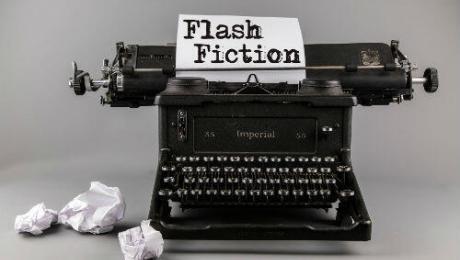Elements of Compelling Characters and Learning How to Create Them
Compelling characters grab a reader’s attention and pull the reader into the story. In the best fiction, a reader becomes an interested observer, or at least feels as if he or she is part of the plot.
How do writers create characters? And, how do writers create characters who are so interesting that readers care enough to know what happens to them?
Interest in the Characters and Being Observant Helps
How a writer feels about the characters is part of the dynamic of writing interesting characters. In his Granta article, “The Making of a Writer,” Kent Haruf explained that, “To be more aware of others and to pay closer attention to what others around me are feeling… are good things if you are trying to learn how to write fiction about characters you care about and love.”
Writers like Eudora Welty and Jane Austen, who lived sheltered lives, were still able to write compelling characters with perceptive details about their society and the world in which they lived because they were observant about the people around them. Observing what motivates people provides writers with insight they can use in their work.
Creative Writing Courses Can Help
Writers can learn from workshops and writing courses how to create complex and compelling characters. Building characters to make them distinctive and credible can be learned. In creative writing courses exercises can help writers explore the facets and traits of characters that make them human and absorbing.
Watching movies to figure out how to build scenes, learning to write dialogue, and taking narrative classes that help writers learn how to craft longer stories that do not lose their momentum are among the skills that writers can learn.
The Distinctive Instructive Style of Writing Workshops
The workshop format generates progress through peer reviews. The University of Iowa’s Writers’ Workshop is recognized as the leader in this space. The university may have come naturally to this approach because of Midwestern farmers’ tradition of “neighboring.” Neighborliness was how small farmers supported each other by helping each other in farming chores. Writing is a lonely craft, but workshops help writers learn to refine their craft sociably.
Writer Kent Haruf went to great lengths to get admitted by the Iowa Writers’ Workshop. As he shared in his Granta article, the teaching methods in his time were more “descriptive” and less “prescriptive.” Experienced writers shared “what they thought worked in a story and what didn’t” and left it up to writers “to figure out how to fix it.”
Whether a reader’s attention stays with the story or the novel will depend on the writer’s skill in creating interesting, compelling characters, storylines, plots, and subplots.
- Published in Writing & Editing Resources
How Copyeditors Can Keep Up with Changing Style and Grammar Rules
Copyeditors face unique challenges when working with multiple clients and writers. Primarily, everyone has their own idea of what is right and acceptable, and clients will vary on what they expect in any given piece of work. Rules also tend to change with the times as traditional writing forms make way for modern artistic freedom in speech and writing. How fast do things change? Oxford English Dictionary editors estimate they add around 1,000 words per year. Wrap your spell-checker around that statistic!
Editing in Real Life
Thinking that editing class you took in college is the be-all and end-all of editing is where potentially great editors falter, and this can make or break a career. Classes are only the beginning, no matter how thick and unwieldy the dictionary and style manual were that you memorized. The best learning even an experienced editor will find is in real life situations, especially from writers willing to share their editing nightmares.
If you Google a phrase like “bad editor,” you will find more than 20,000 results telling you exactly what not to do, including a humorous definition from Urban Dictionary. Likely most of these “Don’ts” were born from writers fed up with their police-like editors ruining a good piece of writing by sticking hard and fast to old rules. As an editor, it is imperative to work with your writer rather than against them. Ultimately, you will end up learning a lot about yourself in the process.
When you are ready to get serious as an editor and you want to improve your skills in today’s terms, find some writers to talk with. Writers are everywhere, so it should be easy to find some with some interesting editing horror stories. Brace yourself for brutal honesty in their opinions of editors because this will shed light on how you can improve. Pay attention to how they fear and perceive editors and vow to do better.
Consider the Audience
Consider editing as a continuing education in the English language. Consider the audience your writer is writing for and what the readers expect as far as form and function. It is important to know that being on the cutting edge of linguistics is bad for business (you don’t want to be too different), but being able to flex your branches with differing needs and expectations will make you less of a “bad guy” and more of a partner.
Finally, seek out a mentor or team of mentors who will provide you uncensored advice on your copyediting techniques. The more people you ask opinions of, the more diverse your skills will become. This in turn will help you break free of stagnancy and allow you more room to grow in the career.
- Published in Writing & Editing Resources
How Flash Fiction Took Over the Internet
Flash fiction, or extremely brief works of fiction, has exploded in popularity over the past few years but has been around longer than many realize. In America, one can find examples of such micro-storytelling as early as the 1800s from authors including Kate Chopin and Walt Whitman. The popular magazine Cosmopolitan popularized these short forms by way of their “Short Short Story” section, and by the 1930s, anthologies of these shorts started to hit the printing presses.
Presently, numerous print literary journals are dedicated to flash fiction, including the Vestal Review and Flash: The International Short Short Story Magazine. The internet has
broken through the limitations of print publishing these short pieces and given audiences a means to instant satisfaction, both in writing and reading the short-form written works that feature short prose, snippets of high drama, and often open endings designed to leave the reader wondering, “What next?”
Bite-Sized Narratives
Often called “fast food for the mind,” flash fiction has jumped off the pages of obscure literary magazines and found a comfortable niche on the internet. Now everyone with an internet connection and some imagination is invited to try their hand at this not-so-new style. Some writers take flash to the extreme. Historically, although the story has seen a few versions from one telling to another, there is a tale of Ernest Hemingway winning a bet with his “For sale: baby shoes, never worn.”
In addition to the six-word-story challenge alluded to above, folks have come up with other now commonly accepted subsets for flash fiction. Included in these powerful little subs are:
- 140-character stories called “Twitterature”
- 50-word “Dribbles”
- 100-word “Drabbles”
- 750-word “Sudden Fiction”
While there is no hard and fast rule for an actual word limit to any flash fiction story, audiences will agree on “the shorter, the better.” The internet is, after all, the go-to source for bite-sized information and entertainment. Because of this, flash fiction naturally took over a corner of the web. Not only has the internet been the impetus for enhanced awareness of the style, it has blatantly influenced its popularity. We now see online journals dedicated solely to this uniquely satisfying writing style.
New online journals crop up weekly, bringing us new flash fiction to consume. With every new voice on the web, the style continues to evolve and new rules are written. Keeping in form means flash writers take existing forms and redefine them. As long as the many forms of flash fiction remain nebulous, audiences will remain interested.
- Published in Writing & Editing Resources
Support Your Writing with the Right Creative Space
Writers may at times find themselves stuck for a new angle on an existing project or at a loss for new topics to explore. When this happens, writing becomes frustrating, and that puts a damper on creating new material. If you are a writer, consider how your immediate surroundings affect you. Do the “same four walls” often make your writing as drab as your office? Does your personal writing drone on about the same topic night after night? If so, it is time for a change.
Professional Spaces
Professional spaces are often highly limited in how they can be personalized. In a creatively stifled office situation, it often helps to invest a small amount of money into personal writing effects like fountain pens, colored pens, and higher-end notebooks or sketch books. Taking notes with different tools helps pull a bored office worker out of the mundane and makes business writing sound better. It is also easier to work when you are happy. E-mails and memos will sound much more alive, catching more interest.
Artistic Spaces
Personal writing spaces offer a lot more freedom when it comes to how they can be decorated. Writers with their own writing rooms can experiment with color, sounds, and scents to wake up the right hemisphere of their brains. If painting the walls with inspiring colors (usually oranges, blues, and greens) is too much of a task, walls can be covered with colorful tapestries or even embellished bed sheets and photo frames. Background music helps some and hinders others, so try a few things until you find a happy place.
Of course, some writers may engage in work that requires both professionalism and extreme creativity. These are the lucky ones! Marketing and advertising are two such careers where a certain amount of artistic freedom is rewarded with bigger paychecks and better contracts. In these instances, such writers are encouraged to make their work spaces (desks, offices, studios) a reflection of their creative vision, places that never stop inspiring their work.
No matter the type of writing you do, whether personal or business, if you ever feel stuck for new ideas, try changing up your surroundings. Something as simple as sitting in a new park if you work primarily indoors, or writing in a museum cafe or anywhere else you do not usually go, can provide the boost needed to start creating again.
- Published in Writing & Editing Resources




